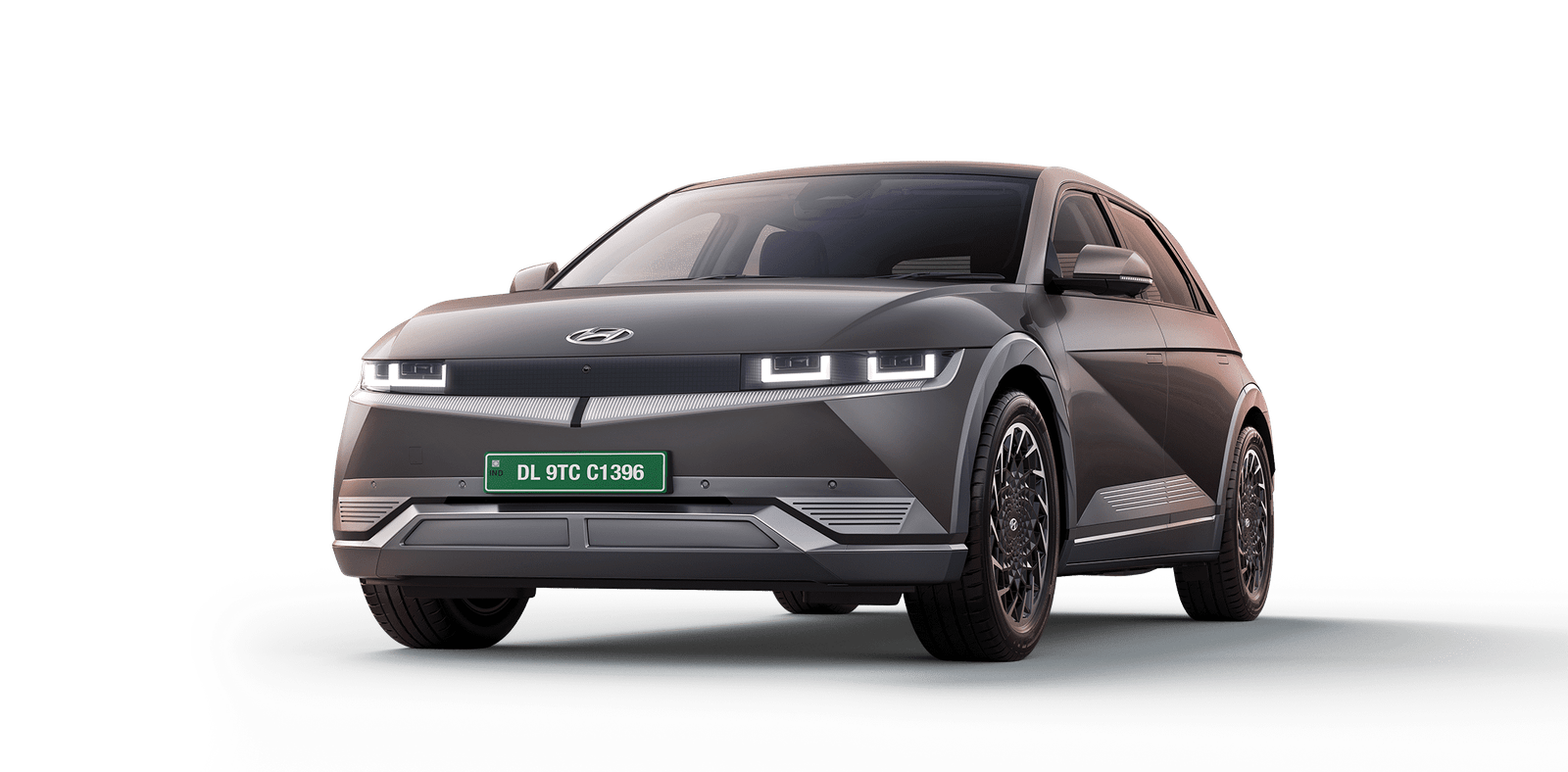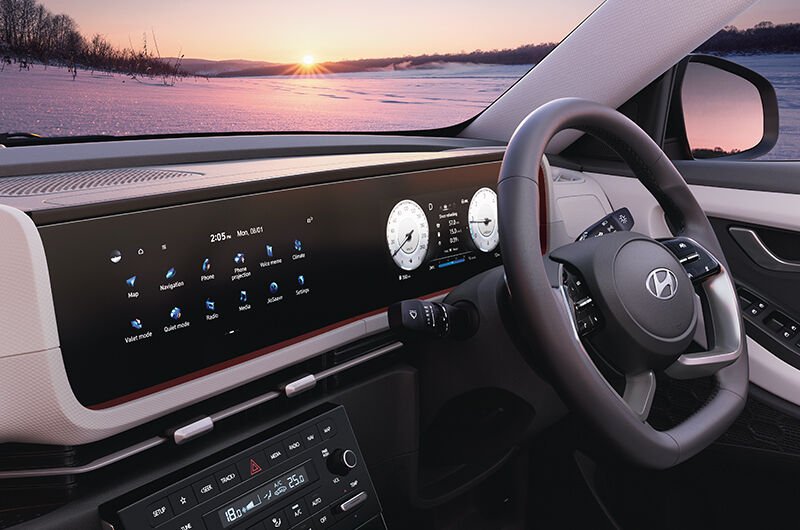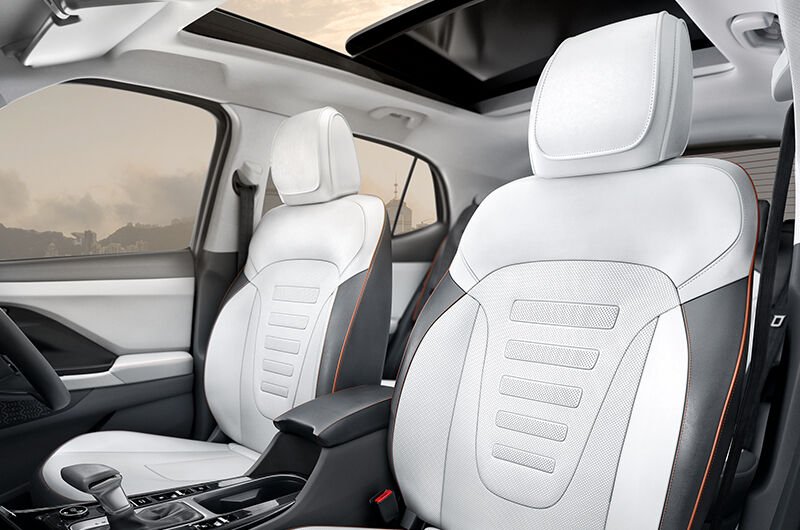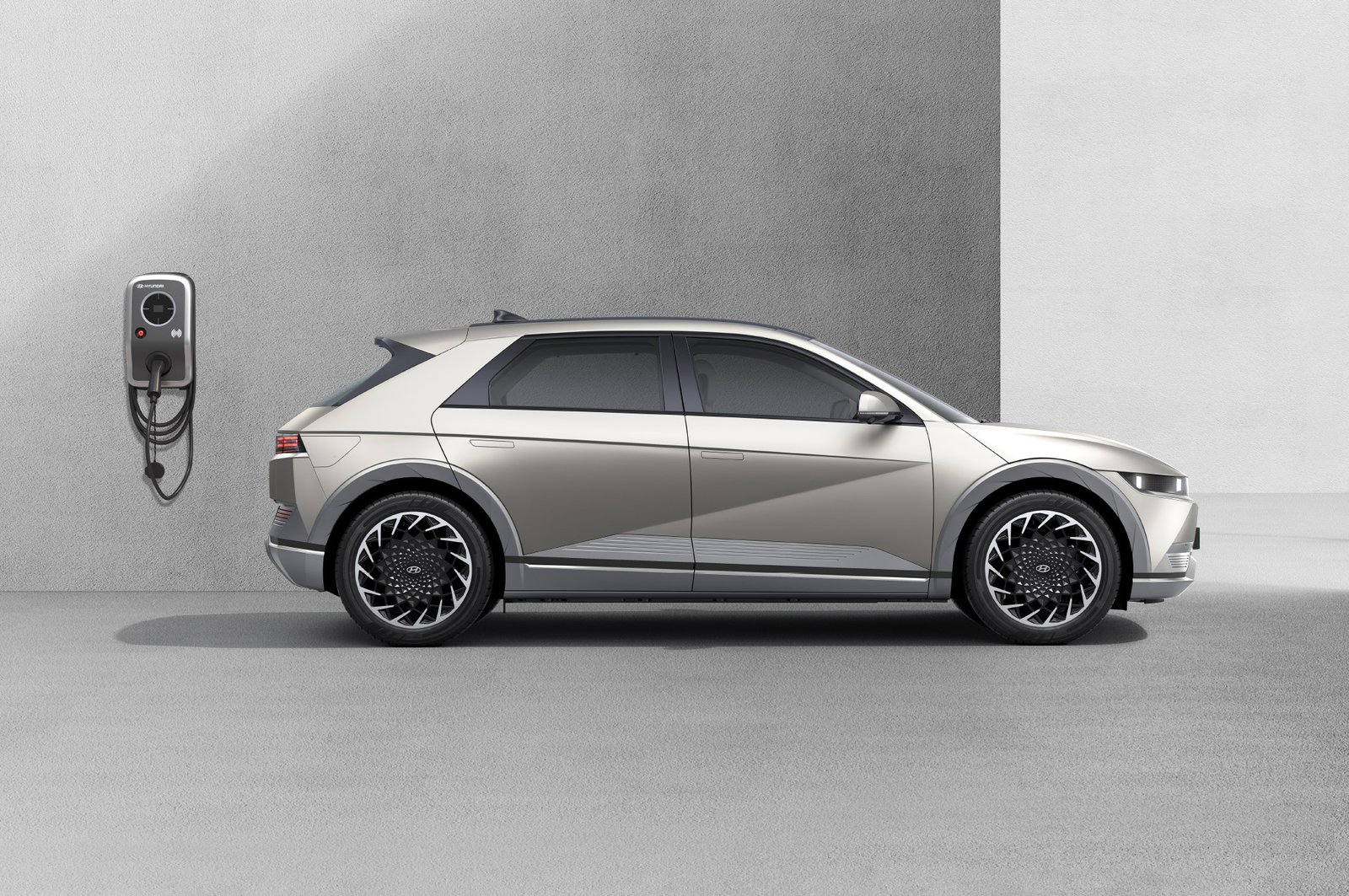Hyundai Creta EV Expected to Launch in Early 2025 and Competitive Edge in the Electric SUV Segment
Hyundai Creta EV Expected to Launch in Early 2025: Hyundai is preparing to launch the electric version of its highly popular Creta SUV, with the debut expected in early 2025. The Hyundai Creta EV will target the rapidly growing midsize electric SUV market, placing it directly in competition with rivals such as the Tata Curvv EV, Mahindra XUV 400, MG ZS EV, and the upcoming Maruti Suzuki eVX. This launch highlights Hyundai’s commitment to electrification in India and aims to attract customers shifting from traditional internal combustion engine (ICE) vehicles to electric alternatives. The Creta EV might even make its debut at the prestigious 2025 Auto Expo, offering a glimpse into Hyundai’s future-focused strategy.

Exterior Evolution: A Sleek Electric Identity
Spy images and early reports have already hinted at several design updates distinguishing the Creta EV from its ICE counterpart. One of the most eye-catching changes is the introduction of 18-inch aero-insert wheels, designed to enhance the vehicle’s aerodynamics. These wheels not only contribute to a futuristic look but also help improve overall driving efficiency by reducing drag, crucial for optimizing an electric vehicle’s range.
Like many electric cars, the Hyundai Creta EV will feature a closed-off front grille since electric vehicles don’t require the same airflow for engine cooling. This design element not only improves aerodynamics but also gives the Creta EV a modern and sleek appearance. The front and rear bumpers have been redesigned, providing a refreshed and more streamlined look to the vehicle.
In terms of lighting, the Creta EV will retain the LED headlamps and tail lamps design of its ICE version but with subtle updates. The tail lamps, in particular, will sport an inverted U-shaped LED layout, contributing to the vehicle’s futuristic appeal. Combined with a newly designed skid plate and updated reflectors at the rear, these modifications emphasize the electric variant’s distinctive identity while staying true to the overall Creta design language.
Interior and Technology: Advanced Features for a Modern Driving Experience
Inside, the Hyundai Creta EV is expected to resemble its ICE counterpart, with some added features tailored for the electric version. The overall cabin layout will feel familiar, maintaining the same spaciousness and premium materials that Creta owners are used to. However, Hyundai is likely to add new technologies that highlight the EV’s advanced nature.

One major update will be the inclusion of an integrated twin-screen layout. The dashboard will feature a 10.25-inch digital instrument cluster, which will provide the driver with essential EV information such as battery status, driving range, and energy usage. This will be paired with a 10.25-inch touchscreen infotainment system, designed to offer connectivity features like wireless Android Auto and Apple CarPlay. The infotainment system will also include Hyundai’s connected car services, giving users real-time information about their vehicle and allowing remote control over various functions.

The Creta EV will also sport a redesigned steering wheel, which will showcase Hyundai’s new EV logo seen on its global electric models. Another notable change is the steering column-mounted drive mode selector, a feature that replaces the traditional gear shifter. This minimalistic design contributes to the vehicle’s futuristic appeal while enhancing the user experience.
Also read, Top 4 Upcoming Toyota SUVs to Watch for in India – Key Details
Space and Comfort: Slight Changes in Dimensions for Enhanced Comfort
To accommodate the battery pack and other electric components, the Hyundai Creta EV is expected to have slightly larger dimensions than its ICE counterpart. These changes will likely make the vehicle more spacious, offering additional legroom and headroom, especially in the rear seats. This will improve overall passenger comfort, making long drives more enjoyable.
The Creta EV will continue to offer a five-seater layout, with plush seating designed for maximum comfort. Premium features like ventilated seats for the driver and front passenger are expected to be included, adding a touch of luxury to the interior. Hyundai is known for equipping its vehicles with high-quality materials, and the Creta EV will likely maintain this standard, offering a sophisticated and comfortable cabin environment.
Safety and Convenience: High-Tech Features for Enhanced Protection
Safety is a key priority for Hyundai, and the Creta EV will come packed with advanced safety features. One of the most significant additions is the inclusion of Level 2 Advanced Driver Assistance Systems (ADAS), which will offer features like adaptive cruise control, lane-keeping assist, and automatic emergency braking. These technologies will not only make driving safer but also more convenient, especially in urban traffic conditions.
The Creta EV will also feature six airbags as standard, providing comprehensive protection for all passengers. Other safety and convenience features include a 360-degree camera system, automatic climate control, and a panoramic sunroof. Wireless smartphone charging will also be available, allowing passengers to easily charge their devices on the go.
Additionally, Hyundai will likely equip the Creta EV with a suite of connected car features, enabling remote vehicle diagnostics, battery monitoring, and pre-conditioning of the car’s climate before starting the drive. These connected features will offer added convenience, ensuring the vehicle is always ready when needed.
Performance and Powertrain: Multiple Motor Options with Over 500 km Range
The Hyundai Creta EV is expected to offer both single and dual motor options to cater to a range of driving preferences. Early reports suggest that the driving range will exceed 500 km on a single charge, making it suitable for both city commutes and long-distance travel. This range will position the Creta EV as a strong contender in the electric SUV market, providing sufficient range to alleviate concerns about frequent recharging.

The Creta EV will come equipped with DC fast charging capabilities, allowing for quicker recharges on the go. However, it remains unclear whether Hyundai will include advanced charging features like Vehicle-to-Load (V2L) or Vehicle-to-Vehicle (V2V) charging, which would enable the vehicle to charge other devices or even other electric vehicles.
Speculation suggests that the electric motor for the Creta EV could be sourced from Hyundai’s Kona Electric, which is already a well-established electric SUV in India. If this proves to be true, the Creta EV will benefit from a reliable and efficient powertrain that has been tried and tested in the Indian market.
Competition: Facing Off Against Rivals in the Growing EV Market
As the electric SUV segment continues to grow in India, Hyundai’s Creta EV will face stiff competition. One of its primary rivals will be the recently launched Tata Curvv EV, which has already made waves with its futuristic design and impressive range. The Tata Curvv EV is positioned as a premium offering, making it a formidable competitor in this space.
The upcoming Maruti Suzuki eVX is another contender that Hyundai must contend with. Maruti Suzuki, known for its affordability and reliability, is expected to bring these qualities into the electric market with the eVX. This could make it a strong competitor in the midrange electric SUV segment.
Additionally, the MG ZS EV and Mahindra XUV 400 are already well-established electric SUVs in India. Both offer competitive features and performance, meaning Hyundai will need to deliver a top-tier product to stand out in this crowded market.
Pricing and Market Strategy: A Competitive Price Point
While Hyundai has yet to reveal official pricing for the Creta EV, industry experts expect it to fall within the premium midsize SUV category. To succeed, Hyundai will need to strike a balance between offering advanced features and maintaining an attractive price point. Based on the pricing of its ICE version and market competition, the Creta EV is likely to be priced between ₹20-25 lakh (ex-showroom). This price range would position it as a competitive option for Indian consumers looking for a feature-rich and capable electric SUV.
Conclusion: Hyundai’s Electric Future with the Creta EV
The Hyundai Creta EV is poised to make a significant impact on the Indian electric vehicle market. With its cutting-edge design, advanced technology, and long driving range, it is set to be a popular choice among consumers seeking a blend of style, performance, and practicality in an electric vehicle.
As Hyundai continues its shift towards electrification, the Creta EV represents a bold step forward. Combining Hyundai’s reputation for reliability with the growing demand for electric vehicles in India, the Creta EV is set to be a major player in the electric SUV market, offering an enticing alternative for consumers ready to make the switch to electric mobility.